Rocca Meli Lupi di Soragna – Parma – Italy
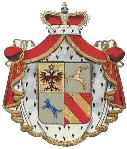
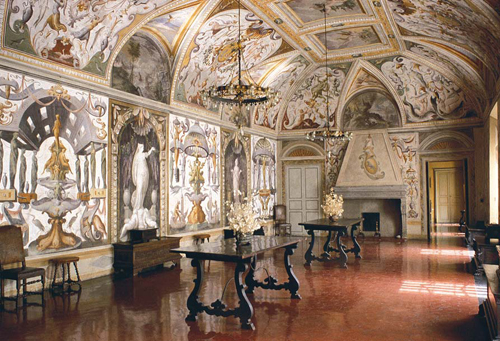
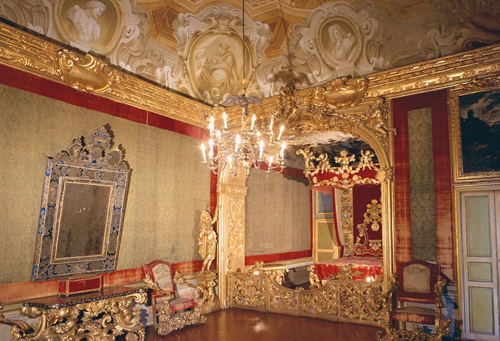
La Rocca fu edificata nel 1385 dai marchesi Bonifacio ed Antonio Lupi che nel 1347 avevano avuto da Carlo IV l’investitura feudale sul territorio, potere che esercitarono fino alle soppressioni napoleoniche. È probabile che il primo fortilizio, a pianta quadra e con le quattro torri ai lati, sorgesse già in capo ad un anno, mentre nel 1392 fu completato il muro esterno. A quei tempi l’edificio si presentava come una poderosa rocca munita d’ogni difesa contro gli attacchi esterni. Col passare del tempo e il consolidarsi delle Signorie, le lotte tra feudatari si fecero però via via più rare e il castello poté quindi ingentilire le sue strutture e diventare un piacevole e comodo palazzo, pur conservando anche le sue strutture antiche. Il castello subì, infatti, dei consistenti rifacimenti strutturali soprattutto nel Cinquecento ma fu solo nel secolo successivo che divenne una sfarzosa residenza principesca, aspetto che conserva tutt’oggi. Successive modifiche sono state portate dal parmigiano Angelo Rasori e dal piacentino Antonio Tomba rispettivamente nel ‘700 e nell’ 800. La Rocca, arricchita nel tempo di innumerevoli opere d’arte e di inestimabili testimonianze del passato, è sempre rimasta di proprietà della famiglia Meli Lupi.
La storia del casato dei Meli Lupi non può che partire dal più antico tra i signori di Soragna, il marchese Guido Lupi, che fu podestà di Parma nel 1202, svolgendo importanti azioni pacificatrici nelle terre vicine. I Lupi anticamente, con ogni probabilità, costruirono il castello e numerosi fortilizi sul territorio: sappiamo, infatti, che nel 1318 le truppe del podestà di Parma distrussero un ‘castelletto’ di Albertazzo Lupi, reo di essersi rifiutato di pagare un’ammenda. Un’altra tappa fondamentale nella storia della famiglia fu la trasformazione dei beni di Soragna in feudo, avvenuta nel 1347 da parte di Carlo quarto di Boemia, con il riconoscimento dei titoli di Marchese per Ugolotto Lupi e i suoi discendenti, e http://www.cialisgeneriquefr24.com/ del diritto di mero e misto impero e di podestà di spada sul feudo. Dopo lunghe traversie dovute alla contesa sull’eredità del nome e dei beni del casato, il marchese Giampaolo Meli ottenne nel 1530 dall’Imperatore Carlo V il diritto di aggiungere al proprio cognome quello dell’estinto casato dei Lupi, nonché il privilegio di porre l’insegna imperiale dell’aquila nello stemma. Tra le personalità che conferirono maggior lustro e prestigio alla casata dei Meli Lupi è sicuramente Isabella Pallavicino di Cortemaggiore, moglie di Giampaolo II, dama conosciuta soprattutto per aver ottenuto dal Duca di Ferrara il permesso di stampare un’edizione della ‘Gerusalemme liberata”, riveduta e corretta dallo stesso Tasso, ancora vivente, che le dedicò un sonetto tuttora conservato nella biblioteca del palazzo.
Nel 1709 Giampaolo Maria ottenne, dall’imperatore Giuseppe I, che il marchesato fosse innalzato a Principato del Sacro Romano Impero con diritto di battere moneta. Il titolo di Principe da allora viene portato dal primogenito della famiglia.
L’attuale Principe Diofebo, oltre alla sua attività nel settore agricolo, prosegue quella tesa ad apportare migliorie nell’attività turistica nella Rocca stessa, e nel campo musicale.
VISITE
La Rocca di Soragna è visitabile, per gentile concessione del Principe e nelle aree non riservate all’uso privato, con i seguenti orari:
dal 1°aprile al 15 ottobre: 9,00-11,00*e 15,00-18,00*
dal 16 ottobre al 31 marzo: ore 9,00-11,00* e 14,30-17,30*
(* inizio ultima visita guidata)
Chiusura: lunedì non festivo
Dopo la visita si possono organizzare in una delle nostre Sale pranzi o cene per i gruppi.
Quotazioni disponibili su richiesta.
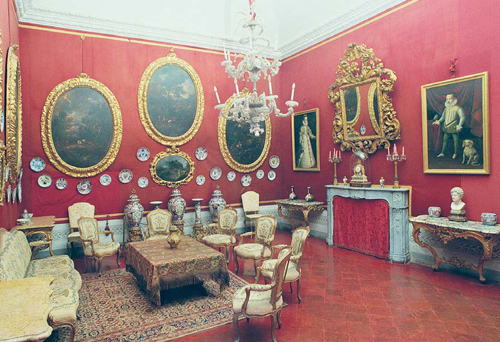
The fortress was built in 1385 by the Marchesi Bonifacio and Antonio Lupi who in 1347 had received feudal investiture over the territory from Charles IV, power that their family continued to exercise until was abolished at the time of Napoleon. It is probable that the first fortress, with a square floor plan and four towers at the corners, took only a year to build, while the outer walls were completed in 1392. At that time, the building appeared as a powerful fortress equipped with all kinds of defensive structures against attacks from the outside. As time went by, and the Signorias became consolidated, conflicts between feudal lords gradually decreased and it was therefore possible to make the structures of the castle more genteel turning it into a more pleasant and comfortable residence, while still preserving its older parts. The castle in fact underwent considerable rebuilding especially in the 16th century, but it was only in the next century that it became a magnificent princely residence, with the appearance that it still has today. Subsequent modifications were made by Angelo Rasori from Parma and by Antonio Tomba from Piacenza, respectively in the 1700s and 1800s. The fortress, enriche over time with countless works of art and invaluable evidence of the past, has always remained the property of the Meli Lupi family. The history of the Meli Lupi family cannot but start from the most ancient of the Lords of Soragna, Marchese Guido Lupi, who was podestà of Parma in 1202, performing important pacifying actions in neighbouring lands. In ancient times, in all likelihood, the Lupi family built the castle and numerous other small fortresses in the area: we know, in fact, that in 1318 the troops of the Podestà of Parma destroyed a small castle belonging to Albertazzo Lupi, guilty of having refused to pay a fine. Another fundamental event in the history of the family was the conversion of their properties in Soragna into a feud, by King Charles IV of Bohemia in 1347, with recognition of the title of Marchese for Ugolotto Lupi and his descendents, as well as of the right to ‘mere and mixed rule and power of sword over the feud’. After long tribulations due to a
dispute regarding inheritance of the family name and property, in 1530 the Emperor Charles V granted the Marchese Giampaolo Meli the right to add the name of the extinct Lupi family to his own name, as well as the privilege of including the imperial eagle insignia in the family coa of arms. One of the personages who brought most distinction and prestige to the Meli Lupi family was without a doubt Isabella Pallavicino di Cortemaggiore, wife of Giampaolo II, a lady famed above all for having obtained permission from the Duke of Ferrara
to have an edition of Torquato Tasso’s ‘Jerusalem Delivered’ printed, an edition that was revised and corrected by the author himself, while still alive. Tasso dedicated a sonnet to Lady Isabella that is still held din the library of the palace. In 1709 Giampaolo Maria succeeded in having Emperor Joseph I elevate the marquisate to a Principality of the Holy Roman Empire, with the right to mint coin. Since then the title of Prince is given to the eldest son of the family. The present Prince Diofebo, besides his work, in the agricultural area, continues activities aimed at making improvements to the tourist business of the fortress itself, and in the field of music.
VISITS
The Rocca Meli Lupi can be visited, by kind permission of the Prince and in the areas not reserved for private use, at the following times:
from 1st April to 15th October: 9.00-11.00* and 15.00-18.00*
from 16th October to 31st March: 9.00-11.00* and 14.30-17.30*
(*start of the last guided tour)
Closed: on Mondays that are not public holidays
Different combinations of visit + lunch and/or dinner are possible: written quotations available on request.
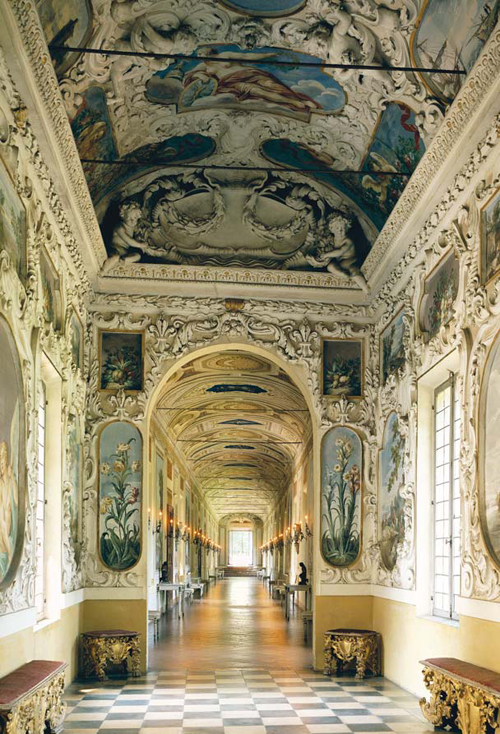
Il prezzo del biglietto d’ingresso per i gruppi di turisti in visita alla Rocca di Soragna è di euro 8,00 a persona, comprensivo della guida in italiano. La visita in lingua inglese o francese è possibile, su prenotazione, ad un costo aggiuntivo di euro 30,00 + Iva (una tantum).
I nostri riferimenti sono:
Tel. 0524.597978
fax 0524.597964